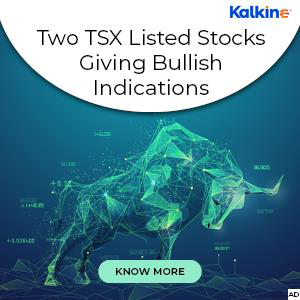Highlights
- Western Pacific Trust shares surged nearly 40% in one month
- Annual share gains surpassed 100%, drawing significant market attention
- An elevated P/E ratio of 17.3x reflects robust sentiment in the financial services category
Western Pacific Trust Company (CVE:WP), a notable entity in the financial services sector, has experienced a striking uptrend in its share performance over recent weeks. The trust has recently seen its share price advance by nearly 40% over a single month, contributing to an impressive annual gain exceeding 100%. Such performance has sparked considerable interest among market participants, with the company’s price-to-earnings ratio now reaching 17.3x—a level higher than many of its sector peers whose ratios often fall below 15x. This dynamic has prompted closer scrutiny of valuation metrics and the market sentiment that supports such an elevated multiple.
Dynamic Share Price Performance
In a market characterized by periods of volatility, Western Pacific Trust’s recent performance stands out. The share price experienced a notable surge within a short timeframe, marking an almost 40% increase in one month. When aggregated over the course of the year, the stock has appreciated by over 100%, reflecting strong market momentum and heightened attention from various segments of the financial community. Such performance signals that market participants have responded positively to the company’s financial reporting and operational updates, leading to renewed confidence in the business model. The rapid upward trajectory of the share price has served as a powerful signal that the company’s strategic positioning may be resonating with broader market trends.
P/E Ratio Dynamics and Market Sentiment
The company’s current price-to-earnings ratio of 17.3x has attracted attention, as it stands above the averages observed among comparable entities in the financial services sector. While some market participants have noted that numerous companies in the broader market maintain P/E ratios below 15x, the higher ratio observed for Western Pacific Trust is interpreted by some as indicative of optimism regarding future growth. Although the trust has experienced a decline in its reported earnings recently, the market appears to have anchored its valuation on other factors, including the significant expansion in earnings per share over the past few years. This divergence between current earnings and the P/E ratio underscores a broader market sentiment that may be betting on a turnaround in profitability or continued robust performance over the medium term.
Earnings Performance and Growth Trajectory
Despite a recent dip in operating profit figures, the company has demonstrated remarkable growth in earnings per share over a three-year span. Over this period, the trust recorded a dramatic increase in its earnings per share, which many view as evidence of a resilient growth trajectory. The contrast between the short-term decline in net income and the long-term surge in per-share earnings reflects a complex narrative; while recent financial periods have posed challenges, the underlying fundamentals appear to be improving at a pace that captures market imagination. Such a strong performance in key per-share metrics may well serve to bolster confidence among stakeholders, who see the potential for the trust to regain momentum even in the face of near-term obstacles.
Valuation Considerations and Price Metrics
The elevated P/E ratio has sparked a debate about valuation, with some market observers noting that the ratio may be high relative to peers. However, the underlying earnings growth over the recent years contributes to a market sentiment that supports this valuation metric. The ratio, when assessed against the backdrop of a significant annual gain, may signal that the market is placing a premium on future earnings potential and improved operating performance. Even though the current figures reveal a dip in earnings, the historical surge in per-share growth provides a counterbalance that seems to be factored into the trust’s valuation. This interplay between past performance and future potential is central to the ongoing discussion about the company’s market positioning.
Operational Challenges and Market Volatility
Amid the upward price movement, the trust has not been immune to operational challenges. The decline in earnings over the last reporting period has raised questions about cost management and revenue generation amid evolving market conditions. Market participants have noted that such challenges, if not addressed effectively, could exert pressure on financial metrics in the coming periods. The situation serves as a reminder that rapid share price gains may sometimes mask underlying operational hurdles. Stakeholders are watching closely as the trust works to balance its impressive market momentum with the need to stabilize its earnings and strengthen its financial foundations. Navigating these challenges will be critical for ensuring that the strong market sentiment is not eroded by future operational setbacks.
Strategic Positioning and Future Financial Prospects
The remarkable performance of Western Pacific Trust’s shares has positioned the company in a favorable light within its sector. The combination of rapid share price appreciation, a high annual gain, and an elevated P/E ratio points to a market that is bullish about the trust’s ability to drive future growth. The significant improvement in earnings per share over the past three years further underscores the potential for continued upward momentum. As the trust works through its operational challenges and strives to enhance profitability, its market valuation may continue to reflect a belief in its strategic positioning. This belief appears to be rooted in a history of strong per-share performance and a commitment to operational excellence, factors that many market participants view as essential for long-term success.
Market Perception and Financial Resilience
While the impressive stock trajectory of Western Pacific Trust has captured widespread attention, it also highlights the importance of understanding the broader market dynamics at play. The elevated P/E ratio, in particular, is a reflection of market sentiment that extends beyond immediate earnings figures. The company’s ability to deliver significant growth in key per-share metrics amid periods of operational challenge suggests a level of resilience that is recognized by market participants. This financial resilience is seen as a positive sign by those monitoring the trust’s progress, even as short-term earnings face headwinds. The balance between robust share price performance and the need to manage operational risks continues to shape the narrative around the trust’s financial health.
Financial Metrics and Market Outlook
The current financial metrics paint a picture of a company that is experiencing both rapid market momentum and significant valuation pressures. The impressive annual share gain, combined with a substantial one-month increase, has elevated the trust’s market standing, while the high P/E ratio reflects a belief in its future earnings potential. Even as the company grapples with a decline in earnings, the dramatic growth in earnings per share over the recent years provides a counterweight that supports its valuation. This juxtaposition of strong long-term performance and short-term challenges is central to understanding the trust’s current market dynamics. As market participants focus on these metrics, the narrative is one of a company that has managed to capture strong sentiment despite facing operational headwinds.
Western Pacific Trust’s recent financial performance offers an insightful look into the interplay between market sentiment, valuation metrics, and operational challenges. With its shares rising significantly over a short period and annual gains exceeding 100%, the trust has attracted considerable attention in the financial services category. The elevated P/E ratio, underpinned by a remarkable growth in earnings per share over several years, reflects a market perspective that is optimistic about the trust’s potential. Simultaneously, the challenges stemming from a decline in current earnings highlight the need for the company to navigate operational hurdles while maintaining its growth trajectory. The company’s current market momentum and valuation metrics serve as a testament to the complex factors that drive market perceptions in the modern financial landscape.





